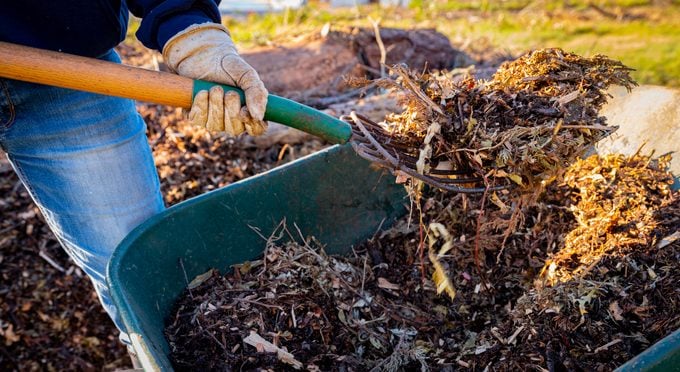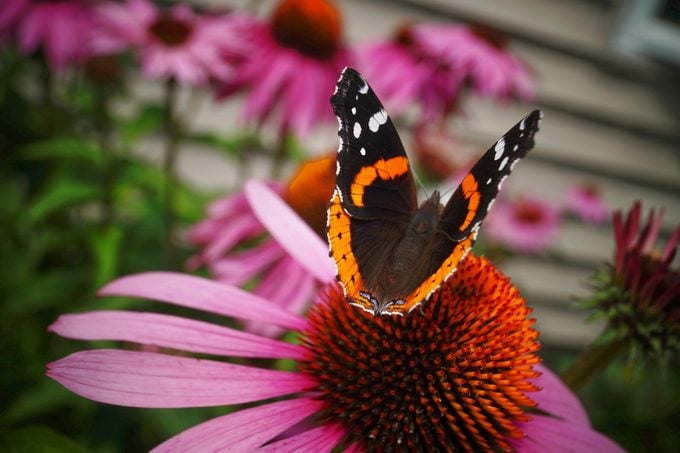The Ruth Stout Method and More Tips to Garden Greener
Updated: Nov. 28, 2023
Just because someone has a green thumb doesn't mean they garden green. Learn the Ruth Stout Method and more ways gardeners can be kind to the earth.

Even if a gardener has a green thumb, it doesn’t mean they always think green when they’re pursuing their favorite outdoor hobby. Here are 6 ways to be kinder to the earth when gardening, including the Ruth Stout Method.
Use the Ruth Stout Method
The late Ruth Stout wrote a series of gardening books in the ’70s on the benefits of mulching in place. It’s called The Ruth Stout Method and I can personally vouch for the fact that it saves labor, feeds plants and conserves soil moisture. The concept is simple: mulch plants and beds with natural debris such as leaves, straw, twigs, prunings, kitchen scraps and pulled weeds. Then let nature do the rest. I mulch in place in the vegetable garden and in a naturalistic border I’ve created with woody plants and perennials. I definitely water less, yet plants seem happier, no doubt because there are more worm castings and other organic matter in the soil. And I’m always gratified to see more birds browsing among the natural mulch. Learn how straw-bale gardening works.
Use Leaves as Mulch and for Compost
Like many others, as a teen I earned spending cash by raking leaves for neighbors. Back then, the leaves were packed into plastic garbage bags and sent to the dump. Yuck, what a waste! Today, many municipalities collect and compost leaves. That’s a good thing, but I’d rather save money on the composting bags and keep the nutrients in my yard. Along with following the Ruth Stout Method, you can mow over the leaves and leave them in place or use them to mulch garden beds. I always save some to add to the compost bin because they provide carbon to balance the nitrogen in kitchen scraps, thus speeding up composting. Learn how to get started with composting.
Avoid Dyed Mulch
A few years ago, I mulched my front garden with dyed wood chips. The uniform color looked great, but a year later when I dug beneath the mulch to plant, there was a spooky absence of earthworms—or any other signs of life—in the soil. While there is some debate about whether the dyes are dangerous, the University of Florida Extension says the danger may lie with the chips, which are often made from recycled wood pallets, some of which may contain treated or contaminated wood. I think the worms knew better than I did. Consider them the canaries in the coal mine and stick with natural mulches and/or the Ruth Stout Method. Many municipalities make natural wood chips available for free. Psst—we asked a garden expert: Is it OK to use rubber mulch?

Grow a Native Plant Garden
Tempted as you may be to try some of the exotic plants you find at the nursery (many do make fine houseplants), your garden will require less watering, fertilizing and general upkeep with plants that are better suited to your growing conditions. These native plants tend to be hardier, more drought tolerant and less prone to insects and diseases. They’re also more suitable to local wildlife, because that’s what the birds and other critters in your area are used to.
Avoid Using Chemicals
A walk through the aisles at the big box store will tell you how dependent we’ve become on chemicals. I never use them myself. In my mind, having a few extra weeds is a small price to pay for peace of mind. And I know I’m not hurting valuable pollinators or putting my family or pets in danger from residual chemicals. If you do choose to use chemicals, please follow label directions and don’t apply them on a windy day. I’ve smelled chemicals that were being applied a block away on a windy day. That’s no fun. And it’s not safe either. Check out 10 natural ways to eliminate garden insect pests.
Repurpose and Recycle Plastic Containers
Plastic nursery pots are a definite convenience, but it’s hard to feel green when you’re dumping the empty containers in the trash right after you finish planting. Instead, try repurposing them. Clean and disinfect cell packs with a 10-percent bleach solution before using them to start seeds. Larger pots are great at protecting tender new vegetable plants from rabbit browsing if you remove pot bottoms first. I leave the protective barrier in place all growing season because it helps direct water when I irrigate and some plants, like peppers, seem to like the extra warmth the black plastic holds. If you’re not reusing plastic pots, you can recycle them at participating big box stores. Check out 10 household items you should repurpose in the garden.
Next, learn how to save money and recycle with cardboard gardening.




















